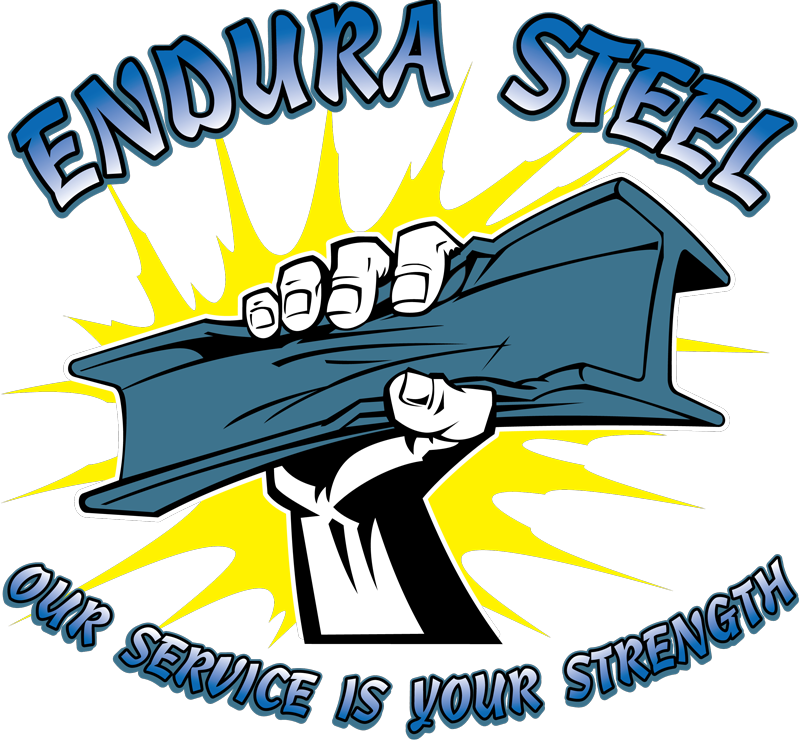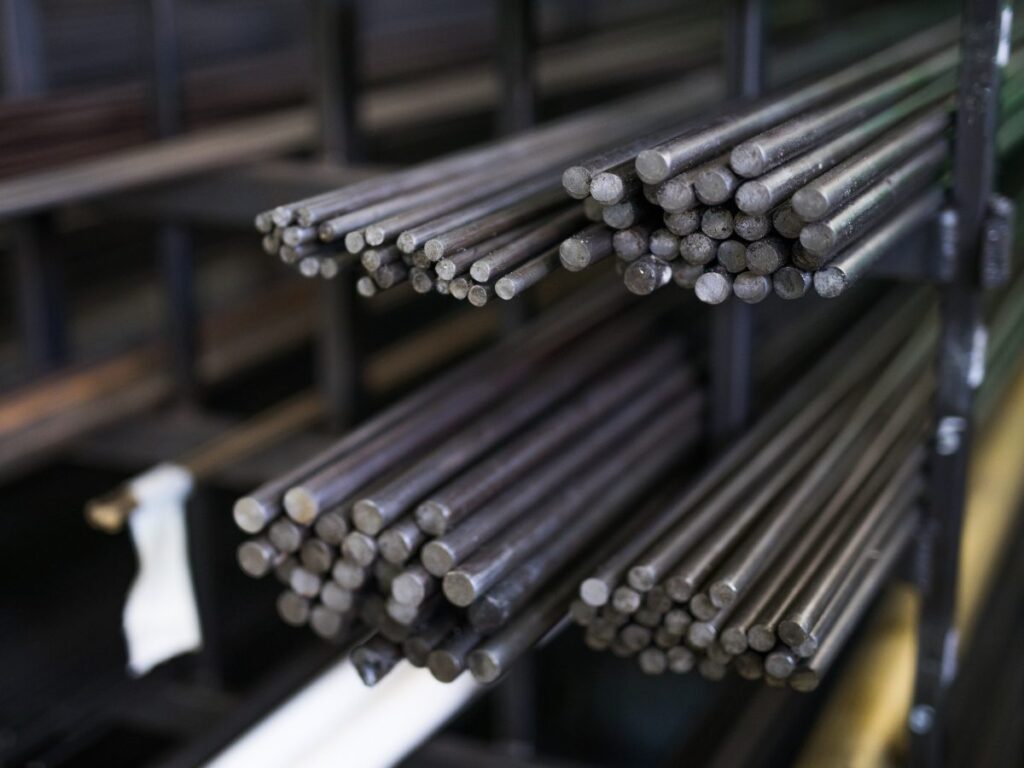Carbon steel bars are elongated products made primarily of carbon and iron, featuring varying amounts of carbon content. They are distinguished from other steel bars by their increased tensile strength, durability, and malleability. It is manufactured through several processes, including hot rolling, cold rolling, and forging, influencing their final characteristics and applications.
Tracing back to the early civilizations, the steel and metal industry has been a cornerstone of technological progress and infrastructure development. Over the years, metallurgy and material science innovations have produced a wide range of metal products, among which they have gained a significant position. Due to their unique properties and cost-effectiveness, these bars play a pivotal role in various applications across multiple sectors, including construction, automotive, and manufacturing.
Types of Carbon Steel Bars
Mild Carbon Steel Bars
Mild carbon steel bars typically contain up to 0.3% carbon, making them highly pliable and easy to weld. They are commonly used in construction projects where malleability and weldability are more important than high strength.
Medium Carbon Steel Bars
carbon steel bars have a carbon content ranging from 0.3% to 0.6%. This type balances flexibility and strength, making it ideal for automotive and machinery components applications.
High Carbon Steel Bars
High-carbon steel bars contain between 0.6% and 1% carbon. Known for their high tensile strength and hardness, they are generally used in applications requiring high wear resistance, such as cutting tools and springs.
Ultra-High Carbon Steel Bars
Ultra-high carbon steel bars have more than 1% carbon content. These bars are incredibly hard but less ductile, mainly used in specialized applications like knife blades and cutting tools.

Physical Properties of Carbon Steel Bars
Tensile Strength
Tensile strength is the maximum stress carbon steel bars can withstand while stretched or pulled. Higher carbon content generally increases tensile strength, making the material suitable for high-load applications.
Ductility
Ductility is the ability of the material to deform under tensile stress without breaking. Mild carbon steel bars are highly malleable, making them ideal for applications that require bending, like construction frameworks.
Hardness
Hardness measures the resistance of carbon steel bars to deformation or scratching. High and ultra-high carbon steel bars score high on the hardness scale, making them apt for wear-resistant applications such as cutting tools.
Weldability
Weldability indicates how easily the material can be welded. As in mild carbon steel bars, lower carbon content typically results in better weldability, making these bars popular in construction and other applications requiring materials joining.
Advantages of Carbon Steel Bars in the Steel and Metal Industry
Affordability
- Cost Analysis
They are generally less expensive to produce than other types of steel or metal bars. This is because the primary ingredients, iron and carbon, are abundant and relatively cheap.
- Return on Investment
The low cost translates to a higher return on investment for projects, especially when coupled with the material’s durability and long lifespan.
Versatility
- Range of Applications
Their versatile nature allows for their use in various applications, from construction to automotive to aerospace, thus maximizing utility.
- Adaptability in Various Processes
They are easily molded and adapted through processes like forging, welding, and machining, making them suitable for diverse manufacturing workflows.
Durability and Longevity
- Resistance to Wear and Tear
They have excellent wear resistance, making them ideal for components in machinery that need to withstand harsh conditions.
- Corrosion Resistance
While not as corrosion-resistant as some other materials like stainless steel, certain steel bars can be treated to enhance their resistance to rust and other forms of corrosion.
Availability and Supply Chain Benefits
- Raw Material Availability
Iron and carbon steel’s primary components are abundant, making the material readily available and contributing to a robust supply chain.
- Faster Production Rates
They generally have shorter production cycles than other materials, allowing for faster project completion and quicker time-to-market for products.
Environmental Benefits
- Recyclability
Carbon steel is highly recyclable, and this characteristic contributes to its environmental appeal. Scraps and excess materials can be melted down and reused.
- Energy Efficiency in Production
It typically require less energy than other materials, contributing to lower greenhouse gas emissions.

Comparison with Other Materials
Stainless Steel
Stainless steel is reputable for corrosion resistance and aesthetic appeal. However, it is generally more expensive to produce. While stainless steel is better suited for applications where corrosion resistance is a priority, it takes the lead in cost-effectiveness and tensile strength.
Aluminum
Aluminum is lighter and offers good corrosion resistance but lacks the tensile strength of steel bars. It may be preferable for weight concerns, but it usually can’t match the load-bearing capabilities of carbon steel.
Composite Materials
Composite materials like fiberglass or carbon fiber offer high strength-to-weight ratios and corrosion resistance but come cheaply. Additionally, they are not as easily recyclable as carbon steel, making them less environmentally friendly.
Industry Applications
Construction
Steel bars are widely used for construction frameworks, reinforcements, and structural components. Their high tensile strength and affordability make them ideal for building durable, cost-effective structures.
Automotive
In the automotive industry, medium to high are frequently used in parts like axles, gears, and crankshafts. Their combination of strength and flexibility helps to meet the rigorous demands of automotive applications.
Manufacturing
From machinery components to tools, they are a staple in the manufacturing sector. Their versatility and adaptability to various fabrication processes make them invaluable for creating a wide range of products.
Aerospace
While not as common as other specialized materials like titanium, carbon steel bars find some use in the aerospace industry for components that do not require extreme lightweight properties or corrosion resistance. Their high tensile strength is an asset in applications that require durability.

Challenges and Limitations
Corrosion Issues
They are generally more corrosion-resistant than stainless or aluminum materials. This limitation often necessitates additional treatments, such as galvanization or coating, to enhance corrosion resistance, which can add to the overall cost.
Lack of Resistance to Extreme Temperatures
It may lose its mechanical properties at extremely high or low temperatures, limiting its applicability when thermal resistance is required. For example, they may not be suitable for high-temperature applications like jet engines or extremely cold environments.
Future Trends
Technological Advancements
Advancements in metallurgy and materials science are poised to bring innovations in carbon steel production. This could include processes for improving corrosion resistance or enhancing mechanical properties, thereby expanding the material’s range of applications.
Market Outlook
As the construction, automotive, and manufacturing industries continue to grow, the demand is expected to rise. Additionally, emerging markets may open new avenues for using carbon steel, influenced by economic factors and shifts in consumer preferences.

Steel Bars Today
For industry stakeholders, staying updated on technological advancements and market trends is advisable for making informed decisions. Investing in research and development can help overcome current limitations like corrosion susceptibility and temperature sensitivity, making the material even more versatile. Furthermore, given the increasing focus on sustainability, considering the environmental benefits of carbon steel, such as its recyclability and energy-efficient production methods, could serve as a selling point in market positioning. Balancing these factors will optimize material selection and potentially open new markets and applications for carbon steel bars.

